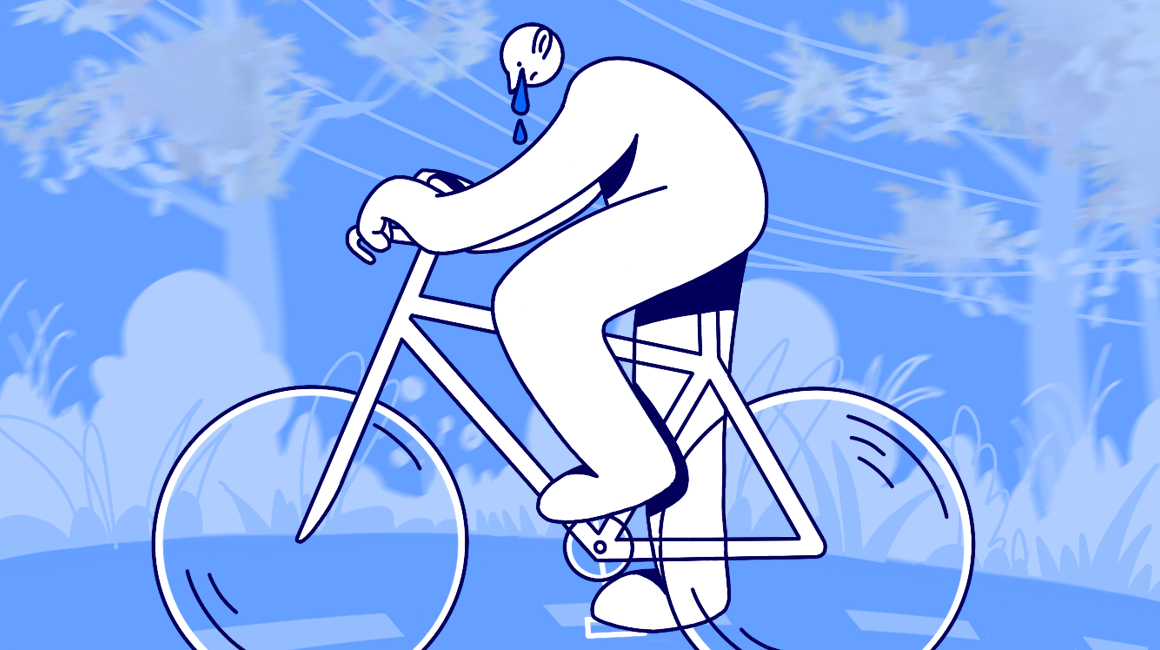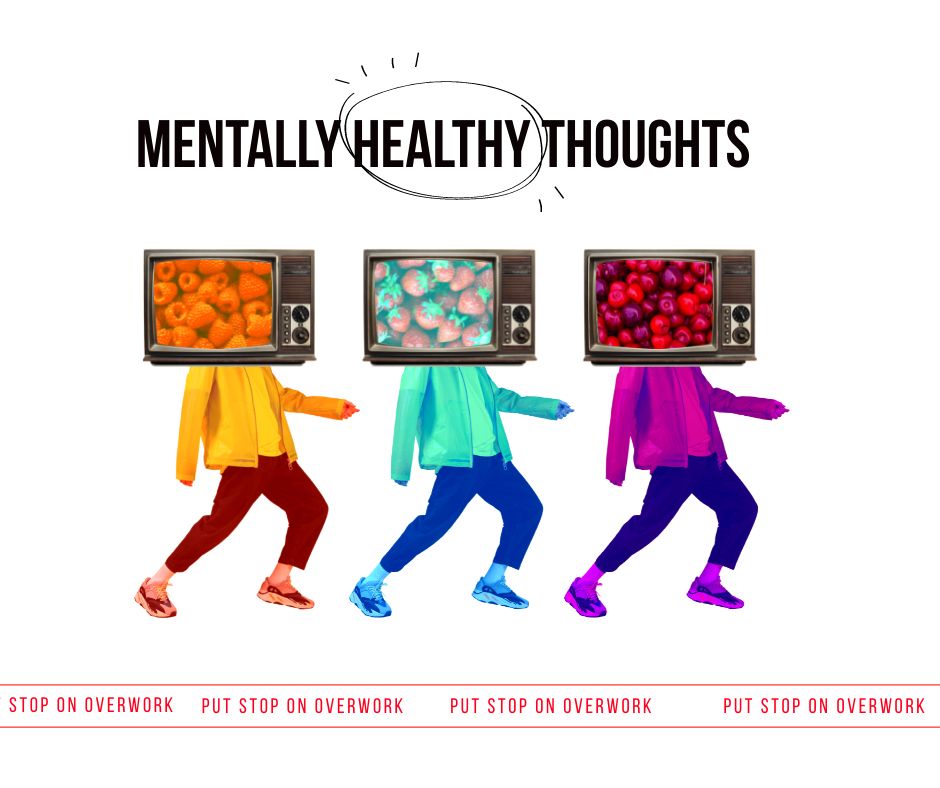How to Recognize and Prevent the 10 Overworking Symptoms
When you are overworked, you are going to fall behind on your goals and accomplish less. Read on to know 10 signs that indicate that you are doing too much and need to take a new approach.

Though the pandemic has motivated people to reject the 9-to-5 work schedule, the hustle culture places success above basic human needs, leading us to overwork ourselves.
In most cases, people ignore the signs that they are trapped by unrealistic expectations, assuming that hard work will eventually pay off and working themselves to death will never happen.
When you are overworked, however, you are going to fall behind on your goals and accomplish less.

According to the World Economic Forum citing the results of Gallup survey in 116 countries:
43% of respondents in over 100 countries claimed to have experienced stress, up from 38% in 2019.
The 10 signs we list below indicate that you are doing too much and need to take a new approach but, to start with, we need to discuss what makes overwork bad and why we shouldn't overwork.
Why overwork is bad

The problem of overwork has had a long history of the study. In particular, in 2016, it showed that 745,000 people died from stroke and heart disease as the result of overwork.
Though long hours are not equal to workaholism, they are still the major cause of overwork. With the shift to working from home, the situation got even more complicated.
Burnout is more likely to occur in employees overworked. Therefore, both employers and employees suffer. While employees who are overworked are more likely to burn out, employers run the risk of facing the challenges of decreased productivity and lowered morale.
We suggest that a deeper dive into a problem could be helpful for recognizing definite signs of overwork as well as identifying factors provoking detrimental consequences of overwork.
10 main overworking symptoms

Negligence of these crises can produce a cumulative effect, and as a result, employees are likely to face such 10 overwork issues as:
- Physical exhaustion
- Emotional lethargy and apathy
- Lack of motivation
- Negativity
- Cynical attitude and resentment
- Health deterioration (headaches, insomnia or sleepiness)
- Low productivity or absenteeism
- Inefficacy
- High error rates
- Dissatisfaction
- Irritability.
By the numbers and facts: the dangerously negative impact of overwork starts at working 55 hours or more per week; exhaustion from work comes not only from long hours but an increased number of communication and information channels, thus, causing cognitive overload.
Even before the pandemic, 6 hours showed to be the optimal number of working hours daily.
The other scenario that became popular with the global shift to remote and hybrid work is adopting a 4 day work week.
This trend brought the emergence of platforms targeting work vacancies for better balance.
Due to the pressure of deadlines and expanding obligations of employees, the checklist to see the warning signs of overwork can be rather extensive but on the level of checking employees’ daily activities, risk factors come down to the following:
🛑 You are not able to adopt a flexible schedule
🛑 You are not informed about the right to disconnect, and not encouraged to prioritize the wellbeing
🛑 You have to constantly check your email
🛑 You are experiencing anxiety about work
🛑 You feel overloaded
🛑 You are experiencing siloed communication with the manager
🛑 You lack tools for automating repetitive tasks.
Overwork can stem from the choice of clunky employee monitoring software so you need to check if your toolkit is rusty: to make a well-informed choice, you can read our guide on employee monitoring.
Solutions and Some Quick Fixes

The best strategy to ward off burnout is to take steps for the prevention of overwork, and it is a domain where empathic leadership proved to contribute to employees' wellbeing at most.
Another idea that can be helpful in preventing overwork is being transactional, and some companies support it. How does it look on the practical level? Employees are encouraged to realize that they are paid for producing the output.
Hence, it is not about commitment to the company but about commitment to the work you perform. The transaction comes to a close at some point, and you have done what you need to do for that period of time.
The shift in the approach helps reduce anxiety and endurance of time famine by putting easy-to-monitor time and performance metrics at the forefront.

Time tracking tools for prevention of overwork
Since the boundaries between work and home were eroded with the disappearance of offices, employers need to provide tools with proven functionality for support of work-life balance.
To tweak the policies, companies can facilitate procedures around PTO for remote employees by implementing timekeeping software with time off tracking functionality that allows requesting and approving time off instantly.
Setting clear boundaries on work and life by using assisting software helps avoid productivity dysmorphia standing for the inability to comprehensively evaluate your contribution to the success and, consequently, leading to overstretch and overwork.
Time tracking provides data not only on the general time consumption but clusters of information on:
- productivity peaks
- the time utilized on the tasks
- apps usage for performance.
It can assist in:
- setting core priorities
- marking clear time boundaries on work and life
- planning time off to make it more intentional.
Therefore, you can use time trackers like TMetric to see which employees are spending their time on high-value tasks, which ones are prone to overload, etc. From there, you can get a better picture of how workload is being distributed — and if something needs to change, it’s easy enough to adjust accordingly.
The bottom line: Using a time tracker can successfully address the issues of overwork and negativity by providing means of equal work distribution, building transparent mechanisms of promotion and compensation, and maintenance of work life balance.
Sleep tracking tools for prevention of overwork
Studies show that afternoon naps are beneficial for productivity, psychological wellbeing, and cognition. It is just one of the tips to follow for preventing overwork.
A bigger question is how you can develop healthy habits contributing to a proper sleep routine to create a good work-life balance and avoid burnout? You have to start by understanding whether your overwork is linked to sleep patterns in the first place. Ask yourself:
- Are you following a set sleep routine?
- Are you experiencing insomnia or other breakages of sleep time?
- Are you using sleep monitoring apps for improving your sleep?
- Are you feeling the impact of working long hours on your sleep routine?
Analyze your answers and make small changes to take power over your sleep time back. Sleep tracking apps come with various functions: for instance, SleepScore can become your real sleep saver.
It delivers detailed sleep tracking data to help users to wake us at the best time and better understand the sleep cycle. There are free and paid versions. The app is available for iOS, Android.
The bottom line: Using a sleep tracker can greatly contribute to setting healthier boundaries on work and life and building a proper sleep routine.
Communication facilitators and stress management tools
The pandemic accelerated the trend for remote work but, paradoxically, it caused a problem of overwork. If your digital transformation is going to be successful, you need to give your employees the right tools and systems to work in a digital, distributed, virtual environment.
This must include reliable team communication tools, as frustrations can arise if it’s not easy for remote workers to engage with their colleagues. This is also important from the perspective of avoiding the issues of siloed communication, as mentioned earlier. Having everyone on the same platform prevents teams from becoming fragmented, and the best apps improve job satisfaction and department cohesion.
One of them is an app for voice isolation, which is irreplaceable in online meetings. Conversations are more focused with less background noise and have improved engagement, resulting in more positive business outcomes while sparing employees' efforts.
It is compatible with over 100 audio-supported platforms for virtual events.
Krisp works similarly for over 800 communication apps to make the user experience of audio and videoconferencing absolutely stress-free.
Stress management apps have had a year of big investments because longer hours along a high level of uncertainty skyrocketed a level of stress that we have to deal with. The effect of stress on our working memory means that even for things that are relatively inconsequential, we have less capacity for cognitive processing.
A part of the solution is in taking a proactive approach, and stress management apps help in it: their functionality is built around reducing toxicity and keeping the focus on real-life actions. For instance, Shine can assist in it:
- self-coaching
- mastering breathing techniques
- keeping the challenges of time management in check
- reminding of taking a break for recovery on physical, emotional, mental, and spiritual levels.

The bottom line: If left unaddressed, long hours and overwork hold us stressed and frustrated. To get a more holistic view of our social and professional activities. applying relevant tools would be helpful as they prove reliable in building clear communication channels and monitoring stress levels.
Takeaways

- Overwork hurts everybody: employees are more prone to burnout, and employers are likely to witness a drop in productivity and low morale.
- Using clunky software and broken communication lines are among the top reasons employees run the risk of overwork.
- With the emergence of new scenarios for work hours (moving to fully remote work, adopting a shorter working day/work week), the company needs to build a strategy and equip employees with reliable tools for automatic time tracking to make the transition to a new work mode smooth and productive.
- The other solutions for overwork prevention include being intentional about how you communicate, planning your time off, and, overall, keeping the focus on being more strategic than situational.

